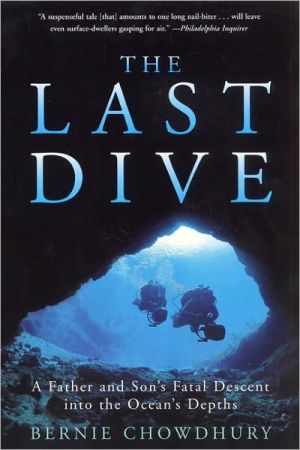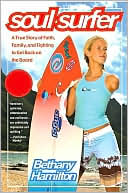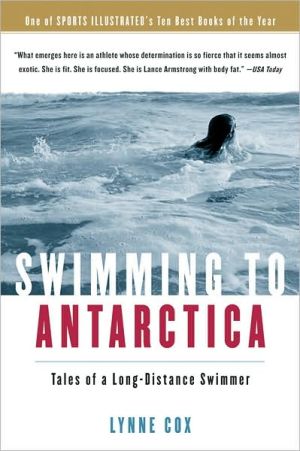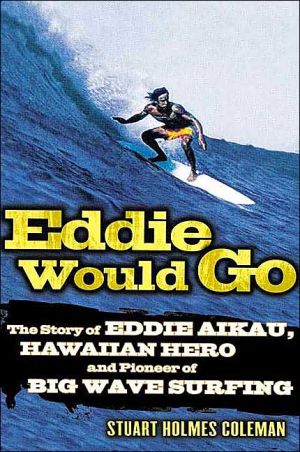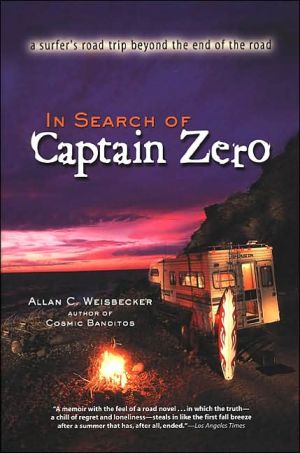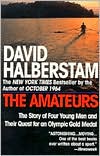Last Dive: A Father and Son's Fatal Descent Into the Ocean's Depths
Chris and Chrissy Rouse, an experienced father-and-son scuba diving team, hoped to achieve widespread recognition for their outstanding but controversial diving skills. Obsessed and ambitious, they sought to solve the secrets of a mysterious, undocumented World War II German U-boat that lay under 230 feet of water, only a half-day's mission from New York Harbor. In doing so, they paid the ultimate price in their quest for fame.\ Bernie Chowdhury, himself an expert diver and a close friend of...
Search in google:
What price are you willing to pay for adventure and knowledge? Spurred on by a fatal combination of obsession and ambition, Chris and Chrisy Rouse, an experienced father-son scuba diving team, hoped to achieve widespread recognition for their outstanding and controversial diving skills by solving the secrets of a mysterious, undocumented, World War II German U-boat that lay only a half day's mission from New York Harbor. Chris and Chrisy Rouse found the ultimate cost of chasing their personal challenge: death from what divers dread the most—decompression sickness, or "the bends." In this gripping recounting of the Rouses' tragedy, author Bernie Chowdhury, himself an expert diver, explores the thrill-seeking, high-risk world of deep sea diving, and its legendary figures, most celebrated triumphs, and notorious tragedies. By examining the diver's psychology through the complex dynamic between father and son, Chowdhury offers a modern morality tale that illuminates the explorer's willingness to risk it all for the pure, raw adrenaline rush of the unknown and the extreme, and the desire to expand our knowledge and the limits of human endurance. Philadelphia Enquirer A suspenseful tale [that] amounts to one long nail-biter...will leave even surface-dwellers gasping for air.
Chapter One\ Deadly Secrets\ October 12, 1992. North Atlantic Ocean,\ approximately 60 miles offshore,\ equidistant from the New Jersey and New York coastlines.\ The wind mounted steadily throughout the night as Chris Rouse, cocooned in his sleeping bag, braced himself against the side of his bunk. He felt a bit uneasy, his stomach tossed by the dark waves that slammed against the 60-foot length of the dive charter boat Seeker. He was not that far from the New Jersey coast, but he might as well have been in the middle of the Atlantic Ocean. Chris peered out from between his sleeping bag and the bunk. In the dawn's soot-gray light, all he could see through the boat's windows was a blanket of sky and dark-blue waves with white spray blowing off their crests. Somewhere in the distance lay the horizon, but he couldn't tell where; the sea and sky were seamless. He judged the waves to be five feet high, with occasional rollers over eight feet. Not a good day to continue the exploration of the most technically challenging dive site he had faced in more than seven hundred logged dives.\ Only yesterday, the thirty-nine-year-old Rouse and his twenty-two-year-old son, Chrissy, had conducted two dives to the unidentified submarine 230 feet below them. The wreck lay in three pieces, like a cigar with its middle torn out and angled between the ends. The middle section included the conning tower, the large tubular structure perpendicular to the vessel's body. The tower, though still intact, had been torn from its mount and thrown aside by whatever unknown force had sunk this submarine, probably back in the Second World War. Underneaththe conning tower was the control room, the submarine's brain. Nothing was left of this nerve center but a jumble of jagged, sharp-edged steel plates and debris, the result of some violent explosion. Yesterday, Chrissy Rouse had crawled under and between the steel plates, wriggling his way inside while his father hovered outside the wreck. Somewhere in those razor-edged ruins lay something that would identify this sub, and father and son were determined to find it. Maybe the captain's logbook-it had to be nestled amid the wreckage just inside the opening. Chrissy hadn't found it yesterday, but the Rouses knew they were close. All that stood in their way was time, effort, and eight-foot waves.\ The Seeker bobbed and tugged at its anchor line, like a trapped animal seeking to break its tether. It had fought the ocean incessantly throughout the night, and its wooden beams and planking let out creaks of protest at the restraint. The passengers and off-duty crew had tried to sleep in their bunks while wedged in such a way as to prevent being thrown to the heaving deck. John Chatterton, a commercial diver, sport-diving instructor, highly respected wreck diver, and one of the Seeker's two captains (required by Coast Guard regulations during an overnight boat charter), burst into the main cabin and threw the light switch. "It's six o'clock," he announced. "If any of you want to do two dives today you need to hit the water early. Weather report's calling for steadily increasing seas, and you can see" -- he nodded toward the window -- "it's snotty already. If you wanna dive, get in the water fast. We'd like to pull the hook and get out of here soon, before we really get slammed. I'm gonna blow off my personal dive, and I'll just go down to pull the hook."\ The blond Chatterton looked as if he'd fit in more readily on a college campus than on a dive boat, with his wire-rim glasses and boyish face. Unlike many hard-bitten sea captains, Chatterton had a receptive mind; he was happy to discuss diving techniques and gear configuration with his customers, even as he remained soft-spoken when talking about his own expertise and accomplishments. Chatterton never made others feel stupid or inadequate. His demeanor, combined with the depth of his experience, lent his advice more weight, and divers sought it out.\ Chatterton was on intimate terms with the wreck that Chris and Chrissy Rouse aimed to conquer. The captain was credited with having been the first diver to identify the mysterious object as a submarine. On Labor Day, 1991, Chatterton had headed out on the Seeker with a group of divers to check out a potential wreck site that the boat's owner, Captain Bill Nagel, had heard about from a fisherman during one of Nagel's frequent drinking bouts. The captain's alcohol-sodden memory had been accurate. On a follow-up dive, Chatterton had recovered a single dinner plate bearing the German eagle and swastika, with the date 1942 stamped on it. The wreck was a World War II submarine, which the Germans called an Unterseeboot -- "under-sea boat," shortened to U-boat. The first U-boat was U-1; the highest-numbered German vessel to see service was U-4712. Because the Germans did not number the U-boats consecutively, 1,152 German U-boats were actually commissioned and put into service during the Second World War. For lack of an official name or number, Chatterton and other divers had dubbed the discovery U-Who.\ Every year along America's East Coast divers find new wrecks -- victims of storm, collision, fire, and war -- but the U-Who was an unusual find. U.S., German, and British naval archives listed the location of every U-boat that lay on the ocean bottom worldwide, but they had no reference to anything even close to the U-Who's location, a half day's mission from the entrance to New York Harbor. The wreck seemed to have been sunk by an explosion, but if it did not go down in a battle recorded in the archives, how...\ The Last Dive. Copyright © by Bernie Chowdhury. Reprinted by permission of HarperCollins Publishers, Inc. All rights reserved. Available now wherever books are sold.
Forewordix1Deadly Secrets12Prevent Your Death!193Pretzel Logic534Artifact Fever815Team Doria '911096The Steel Cave1367Triple Vision1578Voice from the Deep1979Iron Coffins22910The Last Dive26111Eulogy29112Ever Deeper312Author's Note353
\ From Barnes & NobleThe Barnes & Noble Review\ Two hundred feet underwater is a nightmarish place for things to go wrong. Scattered among majestically fallen ships and submarines on the ocean floor are deep-sea divers who bit off more than they could chew. Bernie Chowdhury, himself a survivor of a near-fatal case of the bends, unmasks the culture of deep-sea diving in his riveting book The Last Dive. With remarkable perspective on the perils of his sport, Chowdhury delivers a thrilling tale with powerful emotional resonance. \ The crux of The Last Dive is the story of an oft-bickering father and son. Chris Rouse is a demanding perfectionist; his son Chrissy is free-spirited and cavalier. Chris and Chrissy share an intense love of diving and for each other. Referee to their co-dependence is Sue Rouse, wife of Chris and mother of Chrissy. Chris and Chrissy are fabulously talented divers who graduate from cave diving in controlled waters to wreck diving in the open seas. Even the best of divers, however, suffer the worst of fates. Such is the nature of the game.\ The Last Dive does for wreck-diving what Jon Krakauer's Into Thin Air did for climbing the Himalayas: It uses a dramatically failed expedition to expose a dangerous extreme sport. Each time Chowdhury takes us underwater, whether it be to Florida caves; the Italian luxury liner Andrea Dorea, the "Mount Everest of scuba diving"; or to the elusive German submarine "U-Who"; he creates a setting of tension of dread, of being there. As with Krakauer, Chowdhury's storytelling ability matches his formidable sporting talents.\ There are many similarities between mountain climbing and deep-sea diving. Just as climbers get "high" at altitude, so divers wobble under the hallucinatory effects of "Martini's Law": every 50 feet underwater has the effect of one martini on an empty stomach. Many divers descend five martinis deep.\ Mountain climbers suffer from altitude sickness; divers suffer from the bends. "Getting bent" occurs when divers ascend from the ocean depths too quickly. Nitrogen bubbles form in the bloodstream, causing extreme pain, paralysis, or death. In order to avoid the bends, a diver must adhere to decompression schedules, stopping underwater at various depths to help the body adjust. Troubles with air tanks or, more commonly, mishaps in exploration cost the diver valuable decompression time. And the mishaps are many: Just as mountain climbers suffer limited visibility in snowstorms, so divers must contend with clouds of silt that limit visibility on wrecks. Divers' equipment is easily tangled with the shards and remnants of sunken ships. In a stressed and drunken state, it is easy for divers to lose the anchor line back to the ship. Searches for the anchor line burn invaluable breathing air. A diver forced to ascend without the necessary "deco" is in a perilous state.\ Just as with climbing Everest, egoism, heroism, greed, selflessness, and, finally, tragedy are brought into clear relief by sport-diving ventures. Divers don't think twice of jumping into the frigid ocean to help a bent diver aboard. Sufferers of the bends, such as Chowdhury, have been saved by rushed evacuations to hospital decompression chambers, where doctors risk their own lives to save the victims.\ The diving community has its share of eccentric characters and personalities. When not underwater during lengthy exploration assignments, Glenn Butler used to spend his time in a cylindrical bell. "No prison on earth has ever been so remote: Butler could not leave his pressurized world for the freedom beyond the habitat's tiny viewing port, for to do so would have meant excruciating death from the bends." Marc Eyring, a former Green Beret and a highly respected diving instructor, is now named Karen: "I realized that all of my extreme behavior was just a way to overcome my feelings and desires to be a woman."\ Chowdhury asks himself the hardest question faced by deep-sea sports divers. With obligations to loved ones, why does he continue to risk his life? Young divers are often driven by the compulsion for artifacts, which they stuff into underwater "goodie bags." The experienced diver John Chatterton put his life at extreme risk to finish the Rouses' job and discover the real identity of U-Who. Chowdhury himself no longer needs to fill his trophy case, nor will he take reckless chances for glory. He will continue to dive, however. Like the bends, it is in his blood. (Brenn Jones)\ \ \ \ \ \ Daniel HaysWhile reading The Last Dive I could feel myself hundreds of feet beneath the ocean's surface. I had dreams where I felt the pressure and floated in the beauty. The story is well told and once I started, I could barely come up for air.\ \ \ Kenneth KamlerThis book gave me more palpitations than any dive I've done myself. Bernie Chowdhury is a true modern-day explorer who penetrates not just sunken ships but the minds of those who risk their lives to explore them. The climactic last fatal dive left me as out of breath as the divers he wrote about.\ \ \ \ \ Patrick DillonMeticulously detailed and dramatically paced, a tragic story told deftly and with the rare authority that comes only from personal experience.\ \ \ \ \ Philadelphia EnquirerA suspenseful tale [that] amounts to one long nail-biter...will leave even surface-dwellers gasping for air.\ \ \ \ \ Sherry SontagGoing as deep as the most daring military divers, but without the military's advanced technology or life-saving support, a father and son explore realms as alien as any in space. They swim for the sheer joy of exploration into a mesmerizing adventure undertaken at overwhelming cost.\ \ \ \ \ Tampa TribuneSuperbly written and action-packed, "The Last Dive" ranks with such adventure classics as "The Perfect Storm" and "Into Thin Air.\ \ \ \ \ Publishers WeeklyAn experienced diver with a personal connection to his subjects, Chowdhury chronicles the tragedy of Chris and Chrissy Rouse, an energetic, quarrelsome father-son dive team who, in 1992, met with disaster while attempting to reach a German U-boat in the waters off the New York coast. Though highly competent in risky underwater-cave diving, the Rouses lacked experience on the open sea. Lured by pride to make the 230-foot dive despite questionable weather conditions, the two fell victim to a cruel convergence of circumstances that led to agonizing death. While Chowdhury tells the Rouses' story well and provides insight into their characters, his best writing is devoted to explaining the history and dangers involved in the sport itself. Readers learn in clear terms about how nitrogen can build up in divers' bloodstreams, leading to the danger of "the bends"; and about "Martini's Law," which describes the disorientation caused by nitrogen, an effect roughly equivalent to drinking one martini on an empty stomach at every 50 feet of depth. These and other clarifications of diving's obstacles are combined with stories from his own experience to produce a highly enjoyable survey of human exploit below the surface. Though the book has weak points, particularly stilted dialogue that bristles with exclamation points, the alluring nature of the Rouses' tale and Chowdhury's clear portrayal of diving will entice anyone who has thought about exploring the deep. (Oct.) Copyright 2000 Cahners Business Information.\ \ \ \ \ Library JournalExtreme sports, such as climbing Mount Everest, are becoming increasingly popular in this country. Among these activities is extreme scuba diving deep diving, wreck diving, and cave diving, often using nonair gas mixtures. Chowdury chronicles the world of these divers, using his own story and that of a father-and-son dive team that died following a penetration-wreck dive at 230 feet using air. Excellently written and a real "grabber" to read, the book includes much information about the history, equipment, and people who make up the world of extreme or "technical" diving. This book should be read by any diver thinking of getting involved in wreck, cave, deep, or mixed-gas diving. One hopes it will change their minds, for there's absolutely no margin for error in these risky ventures. There is also much meat here for those interested in the psychology of extreme sports. Strongly recommended for libraries of all types with interests in scuba diving, sports (especially extreme sports), and the psychology of sports and risk-taking.--Margaret Rioux, MBL/WHOI Lib., Woods Hole, MA Copyright 2000 Cahners Business Information.\\\ \ \ \ \ Kirkus ReviewsExperienced sport diver and publisher Chowdhury (Immersed magazine) chronicles the accidental deaths of a fatherson diving team.\ \
